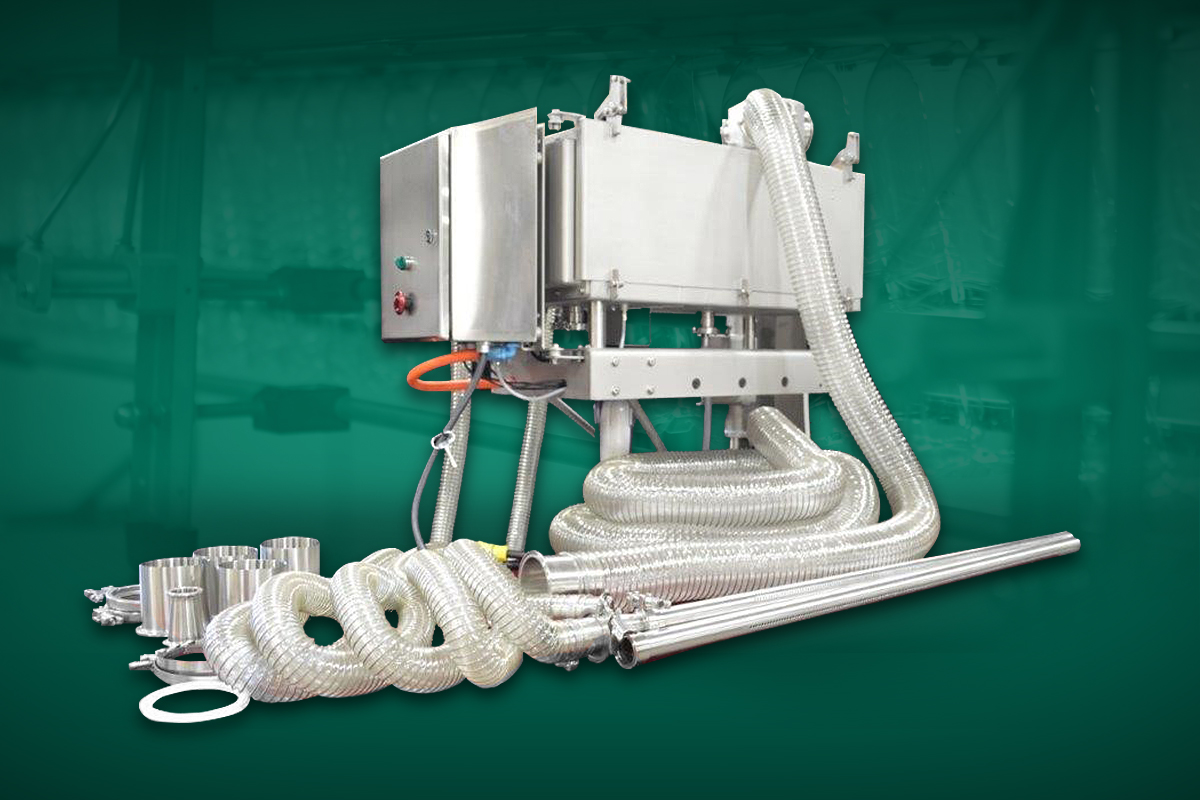Need Dust Collection? Particle Saturators Provide Several Advantages Over Conventional Systems

Dust management is critical to contamination prevention and workplace safety at food manufacturing plants. Unfortunately, many conventional equipment solutions for managing breading dust particles have a long list of requirements that make them expensive to install and challenging to maintain. Here are 4 reasons why food manufacturers should consider a particle saturator instead of a conventional dust collection system.
1. A particle saturator eliminates the costs associated with the prevention of combustible dust explosions.
Particle saturators are “wet systems” that do not contain combustion chamber air. As dust passes through a particle saturator’s mixing chamber it is dampened by water. This design feature eliminates the manufacturer’s need to include measures – such as blowout panels and sprinkler systems – that ensure the dust collection equipment complies with National Fire Protection Association requirements. In fact, many traditional dust collection systems are placed outside to mitigate the risk of explosion hazards. With vacuum hoses that hook to all equipment/machines that produce airborne particles, particle saturators are designed to be located near the source of the dust.
2. A particle saturator is easy to clean.
After the dust is dampened by the water in a particle saturator’s mixing chamber, the mixture flows through a removable separator screen. The heavy water and saturated dust fall to the bottom and drain into a collection chamber. To clean the separator screen in Fluid Flow’s particle saturator, operators simply need to open the separator screen’s access door and complete a high-pressure wash-down, or remove the separator screen to clean it.
The Fluid Flow particle saturator also features a second nozzle that injects water directly into the separator screen. The water nozzle is operated by a timer that allows operators to automate flushes for the separator screen. This ensures the screen does not get blocked. The frequency and duration of the flushes can be adjusted to meet the demands of various processes.
3. A particle saturator is easy to install and configure for every plant’s unique needs.
Particle saturators are available in a variety of sizes to address varying particle removal needs, and can be mounted to equipment or a floor stand (multiple mounting configurations such as swing out, slide out and roll-around cart are also available). In most situations, in-house personnel can complete installation of a particle saturator in about 2 hours to keep downtime low and installation expenses at a minimum.
4. Compared to traditional baghouses, particle saturators reduce AC load, which results in lower energy costs.
When multiple particle saturators are installed to remove airborne particles for each product line in a plant, this configuration eliminates the removal and exchange of conditioned air that a traditional baghouse requires. The energy costs of traditional baghouses can cost 10 tons of AC per 1,000 CFM of conditioned air, which can be overwhelming. In contrast, air that is exchanged locally through particle saturators does not result in incremental AC costs.
The experts at Fluid Flow have been helping food and beverage plants improve their operations through cost-effective processing solutions for over 50 years. To learn more about how a particle saturator can reduce employee health hazards, prevent cross-contamination of allergens and reduce sanitation challenges created by airborne breading dust, while offering a low cost of ownership, please download Fluid Flow’s Particle Saturator brochure.

